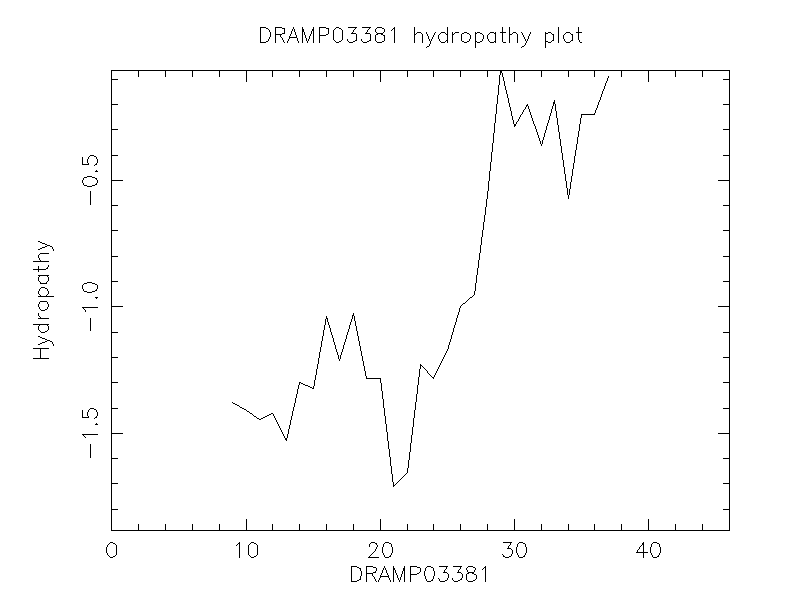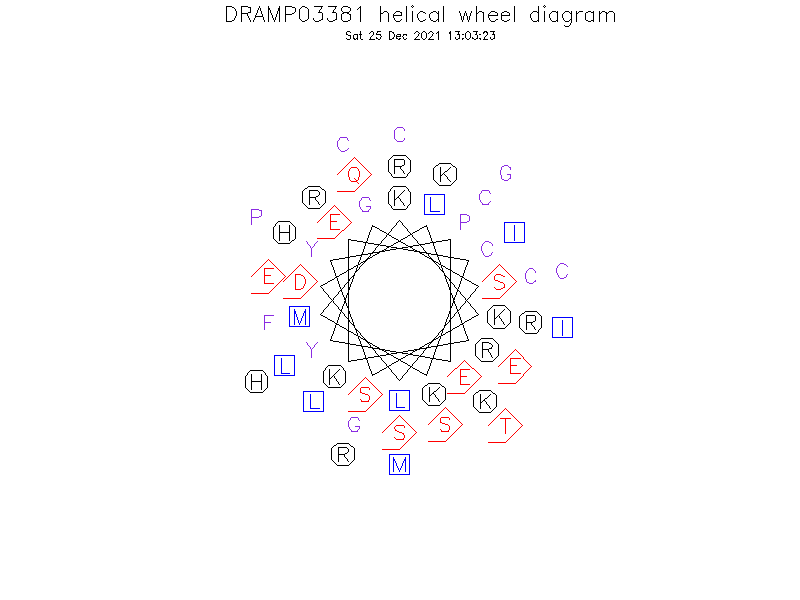General Information
-
DRAMP ID
- DRAMP03381
-
Peptide Name
- Beta-defensin 17 (BD-17, mBD-17; Defensin, beta 17; Rodents, mammals, animals)
-
Source
- Mus musculus (Mouse)
-
Family
- Belongs to the beta-defensin family
-
Gene
- Defb17
-
Sequence
- KKSYPEYGSLDLRKECKMRRGHCKLQCSEKELRISFCIRPGTHCCM
-
Sequence Length
- 46
-
UniProt Entry
- Q30KP6
-
Protein Existence
- Transcript level
Activity Information
-
Biological Activity
- Antimicrobial, Antibacterial
-
Target Organism
- No MICs found in DRAMP database
-
Hemolytic Activity
-
- No hemolysis information or data found in the reference(s) presented in this entry
-
Cytotoxicity
-
- Not included yet
-
Binding Target
- Not found
Structure Information
-
Linear/Cyclic
- Not included yet
-
N-terminal Modification
- Not included yet
-
C-terminal Modification
- Not included yet
-
Nonterminal Modifications and Unusual Amino Acids
- Not included yet
-
Stereochemistry
- Not included yet
-
Structure
- Bridge
-
Structure Description
- Not found
-
Helical Wheel Diagram
-
PDB ID
- None
-
Predicted Structure
- There is no predicted structure for DRAMP03381.
Physicochemical Information
-
Formula
- C230H380N72O65S8
Absent Amino Acids
- ANVW
Common Amino Acids
- CK
Mass
- 5450.47
PI
- 9.24
Basic Residues
- 13
Acidic Residues
- 5
Hydrophobic Residues
- 7
Net Charge
- +8
-
Boman Index
- -127.47
Hydrophobicity
- -0.835
Aliphatic Index
- 50.87
Half Life
-
- Mammalian:1.3 hour
- Yeast:3 min
- E.coli:2 min
Extinction Coefficient Cystines
- 3355
Absorbance 280nm
- 74.56
Polar Residues
- 16
DRAMP03381

Comments Information
PTM
- Contains three disulfide bonds 16-44; 23-37; 27-45.
Literature Information
- ·Literature 1
-
Title
- Cross-species analysis of the mammalian beta-defensin gene family: presence of syntenic gene clusters and preferential expression in the male reproductive tract.
-
Pubmed ID
- 16033865
-
Reference
- Physiol Genomics. 2005 Sep 21;23(1):5-17.
-
Author
- Patil A.A, Cai Y, Sang Y, Blecha F, Zhang G.

